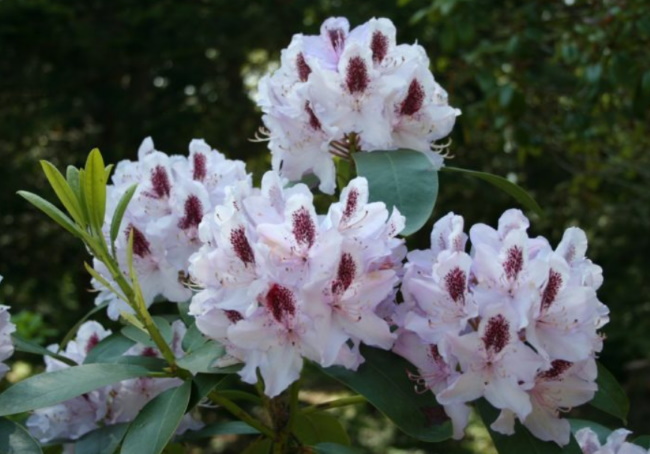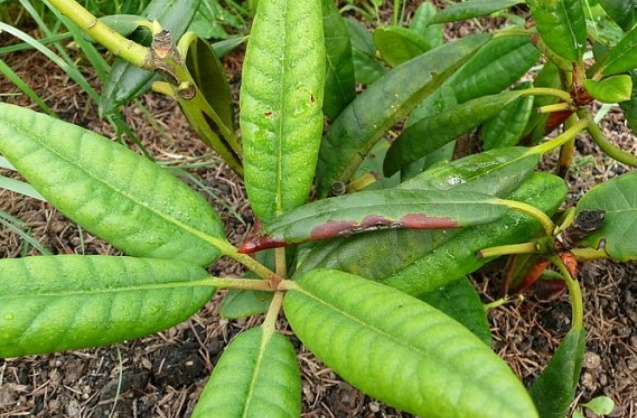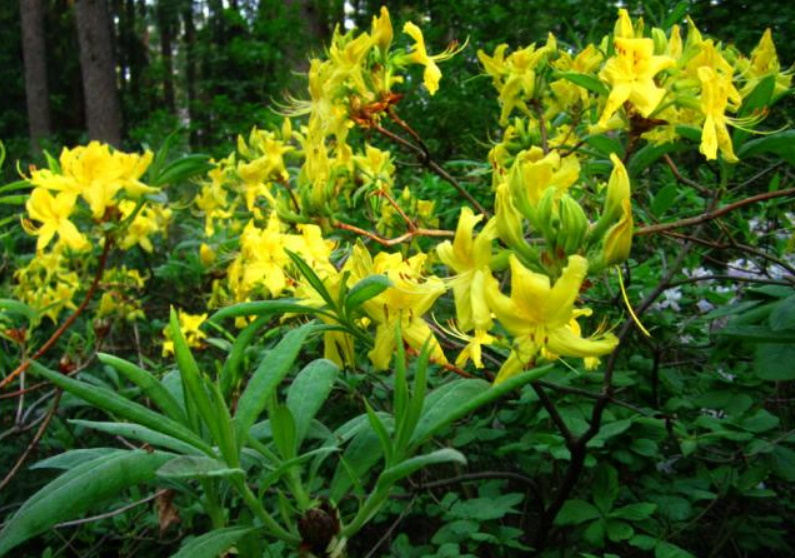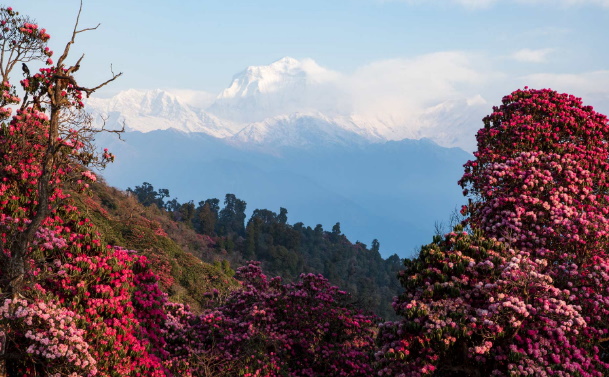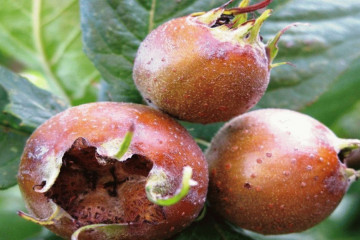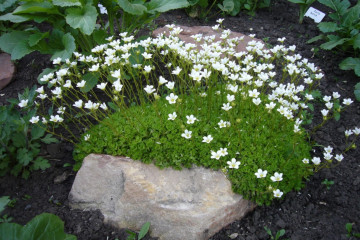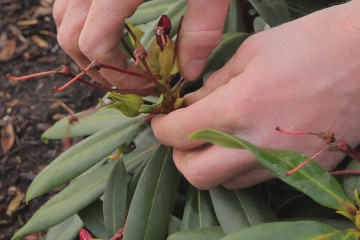Why rhododendron does not bloom outdoors in the garden: what to do
Content:
Lush inflorescences of spectacular plants from the genus Rhododéndron compete with roses in beauty and decorativeness. Graceful bell-shaped flowers of various colors grow on trees up to 2 m high. Some species of rhododendrons shed their leaves - they are classified as deciduous indoor plants and are called azaleas, while most of the representatives of the genus are evergreen and semi-evergreen shrubs.
How many rhododendron blooms in time
The flowering period can be as little as 10 days or stretch over 2 months. On average, most bushes bloom for about two weeks.
Some species of evergreen rhododendrons bloom twice a year in open field conditions. This happens if an abnormal heat occurs in late summer - early September.
Subsequently, in the spring of next year, the formation of generative buds does not occur, and this becomes the reason why the rhododendron does not bloom in the open field, or blooms much worse than last year.
The main reasons for the lack of flowering
Grown from cuttings obtained from adult plants, rhododendrons can bloom as early as the next year after rooting. Wild plant species - Japanese, Daurian, Canadian, which reproduce in natural conditions by seeds and bloom 3-4 years after the emergence of seedlings.
At home, specimens grown in their own garden or in the country from seeds sometimes bloom only in the seventh year of life.
The reasons why the rhododendron does not bloom may be:
- unsuitable soil and climate;
- lighting conditions;
- lack of adequate nutrition;
- insufficient or improper care of plants.
Too alkaline soil
Under natural conditions, representatives of the genus Rhododéndron grow even in the mountains. For their compact surface roots, a small layer of humus-rich soil is suitable. The root system develops well on loose, air-permeable soils, which has an acidic reaction. The high acidity of the soil is supported by rotted bark, fallen leaves, small branches, needles.
Rotting organic residues retain moisture, create favorable conditions for the development of humus-producing microorganisms useful to plants, ensure sufficient ventilation of the root system, release micro- and macroelements in a form accessible to the roots of shrubs.
An increased alkaline reaction of the soil in places where rhododendrons grow violates their natural growth conditions. This leads to the fact that the bushes do not bloom, do not give an annual growth, begin to weaken, hurt, suffer from pests.
If rhododendron is planted on alkaline soil, yellowness appears on the leaves over time - this is how chlorosis manifests itself, leading to drying of the leaves and gradually to the death of the entire bush.
Inadequate fertilization, deficiency of elements
The numerous fibrous roots of plants of the genus Rhododéndron are designed to store nutrients and then pump them through the internal wiring system of the stems into the leaves, flowers and fruits of the plant.
Lack of iron and manganese, arising from low soil acidity, lack of nitrogen, phosphorus, boron lead to the fact that the rhododendron grows poorly, suffers from leaf spot and rust, becomes covered with brown and reddish spots, and stops developing.
The bush grows on the wrong substrate
An incompletely qualified answer to the question of why rhododendron does not grow can lead to the fact that the soil substrate will be improperly prepared for planting cuttings or seedlings of plants.
The height of the bushes, the intensity of the color of flowers, the duration and timing of flowering, and frost resistance largely depend on its composition. Although the latter factor also depends on the varietal characteristics of the rhododendron variety.
Particularly winter-hardy species include the University of Helsinki variety, which does not freeze even at -40 ° C, varieties that can withstand temperatures of -32 ° C - Daursky, Ledebura, Schlippenbach.
But what if the rhododendron does not bloom?
There are always many justified reasons for worrying about why the rhododendron did not bloom. The duration and time of the beginning of flowering of rhododendrons growing in open ground depends on the genotype of its species, age, growing conditions and weather conditions.
Heat shortens flowering time by 4-7 days, cool rainy weather prolongs flowering time by 20-30 days.
In order to determine what to do if the rhododendron does not grow, it is necessary to find out in what natural conditions it develops.
For example, the Tibetan rhododendron, accustomed to living on stony, marginal soil in a cold climate with low atmospheric pressure at an altitude of 4000 m, will hardly survive in a garden where conditions are very different from the usual natural ones. This may also be the secret of why the rhododendrons changed color when they were transplanted to another place.
In order for rhododendrons to bloom for a long time and abundantly, it should be borne in mind that:
- they grow poorly and bloom in the shade, but well in the light, while they do not tolerate bright light - therefore, plants should grow in partial shade, direct sunlight should hit the bush for no longer than 5-6 hours a day;
- the soil should have an acidity not higher than 5.5 pH - if necessary, measures are taken to increase the acidity of the soil with the help of sphagnum peat, heather soil, citric or acetic acid, while controlling the pH value so as not to exceed the permissible norms and not to destroy the plants ;
- Rhododéndron belongs to hydrophilic plants - flowers like irrigation with rain, spring or settled water, the frequency of irrigation depends on the dryness and temperature of the air, waterlogging of the soil is detrimental to the root system;
- very severe frosts can lead to freezing of species of rhododendrons that are not resistant to cold weather - the negative consequences will be prevented by insulated protective shelters and pre-winter mulching of the root zone.
Regular feeding of rhododendrons
Plants need feeding at all stages of growth.At the beginning of the growing season, emphasis is placed on nitrogen-containing fertilizers, which allow the roots, stems and leaves, after winter dormancy, to proceed to intensive development.
In the summer, top dressing is carried out as the plant grows green mass, forms and dissolves buds, forms fruit pods.
At all stages, it is advisable to use ready-made multicomponent complex fertilizers intended for azaleas and rhododendrons. A wide range of drugs offered by manufacturing companies allows you to choose the products that plants need at different stages of their life.
Rhododendron bushes grow very slowly and sometimes do not bloom soon. But gardeners are still very fond of planting these beautiful shrubs, because it is not for nothing that these plants have a second name - alpine rose.
